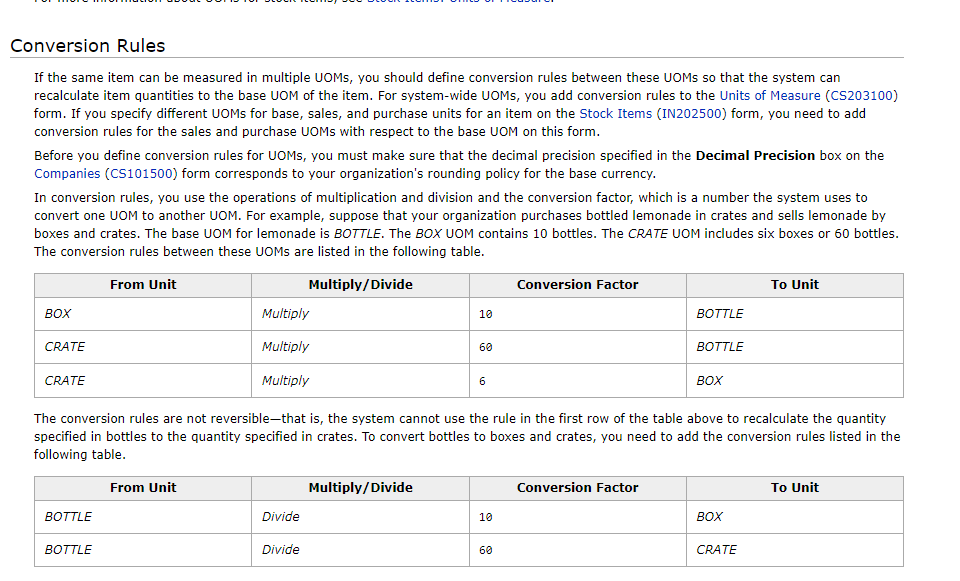Can someone let me know what the logic of the conversion of units of measure is. I have read the help area about 10 times and I must have a mental block as it seems to be the reverse of what I would expect for converting from one unit to another. i.e. I would think converting a box of 10 bottles to a base of 1 bottle would require the instructions to divide by 10 but the operand is multiply. I am feeling quite stupid about this so please be gentle..

Best answer by rosenjon
View original


